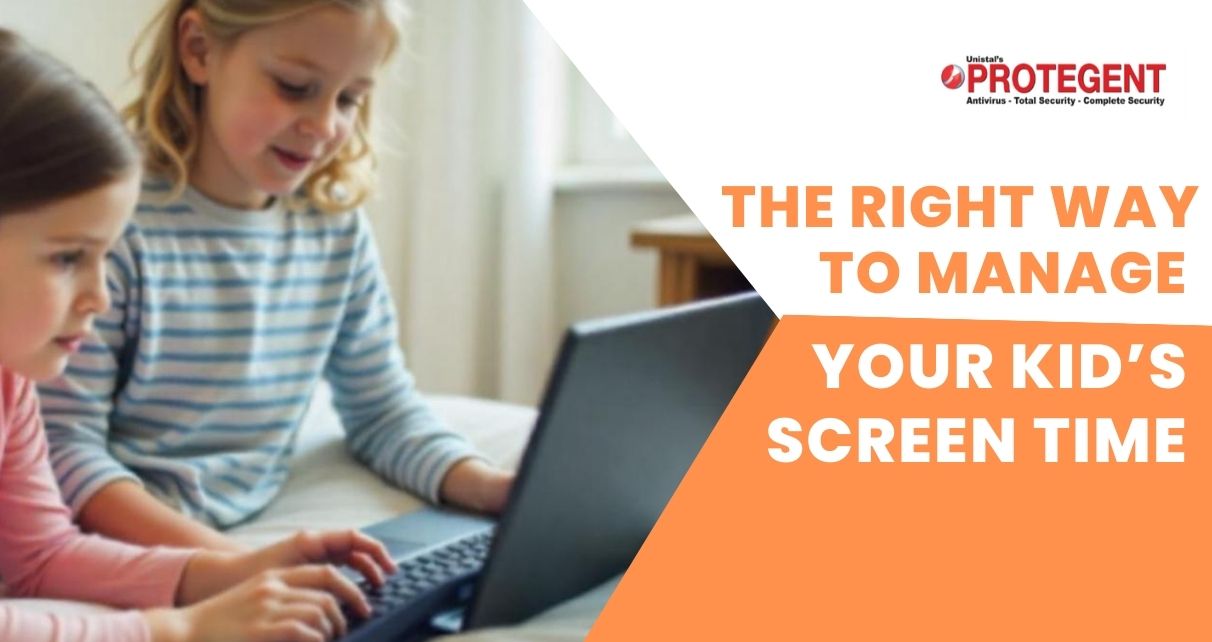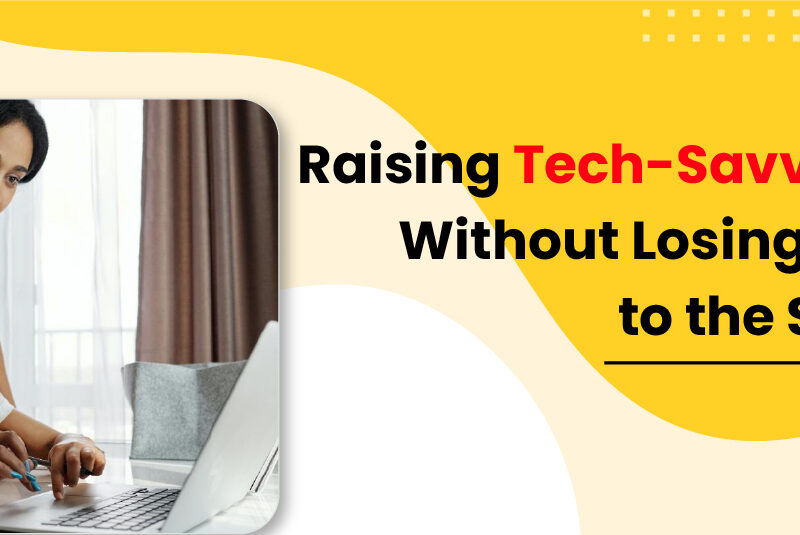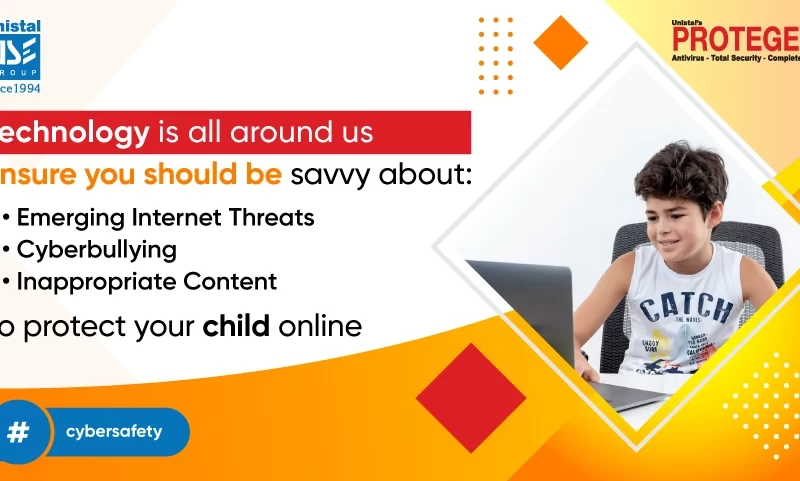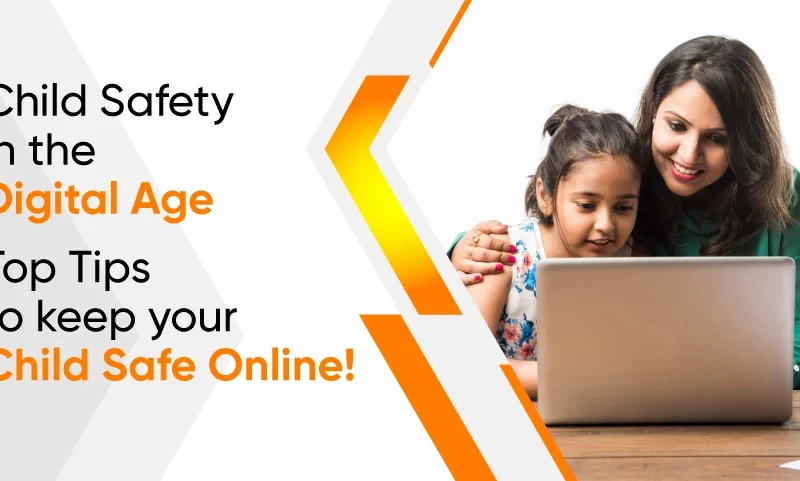
Is Your Child’s Screen Time Putting Them at Risk? How to Monitor and Protect
Kids and screens are a new age battle that almost every parent in the 21st century is dealing with. Whether it’s the TV, laptop, tablet, or smartphone, screens have become an inseparable part of a kid’s daily routine. And to be frank, sometimes, handing over a device is the easiest way to keep them occupied. But how much is too much?
After the pandemic, everyone’s overall screen time gradually increased. For kids, it has become a tool to learn and grow in this high-tech world. But too much “screen time” can have negative effects on their mental health and eventually on their physical growth as well.
“On average, children aged 8-18 spend 7.5 hours a day in front of screens for entertainment alone—which amounts to 114 days a year.”
“A survey conducted among 1,500 parents found that 69% of children aged 12 and above possess their own tablets or smartphones, giving them unrestricted access to the online world. Seventy-four percent of them turn to screens for YouTube, while 61% engage in gaming as their preferred digital pastime.”
While technology has transformed education, entertainment, and social interaction, excessive screen time is becoming a serious concern. Since the lockdown, many professionals have been working from home while raising their children, leading to a steep increase in screen time among kids of all age groups. Medical experts warn that too much screen exposure can lead to obesity, sleeplessness, headaches, and eye strain.
It’s not just children who are affected—people of all age groups are developing unhealthy screen-time habits. By being more attentive to your family’s daily and weekly screen habits, you can help them overcome digital addiction.
What Can Happen?
While technology is an integral part of modern life, its overuse can negatively impact a child’s physical and mental well-being. Excessive screen time can lead to various consequences, such as:
- Obesity: Prolonged sitting leads to a sedentary lifestyle.
- Sleep disturbances: Excessive screen time before bed affects sleep quality.
- Eye strain and headaches: Constant exposure to screens can harm eyesight.
- Behavioral issues: Withdrawal symptoms, mood swings, and even aggression when screen time is restricted.
- Exposure to inappropriate content: Kids may come across disturbing material, engage in unsafe online activities, or fall prey to cyber threats.
The Reality Check: What Experts Say
The Indian Academy of Pediatrics (IAP) has issued strict guidelines on screen time for children:
- Below 2 years: No screen time at all.
- 2-5 years: Limited to 1 hour per day under adult supervision.
- 5-10 years: Should not exceed 2 hours per day, with balanced outdoor activities.
- Teenagers: Should focus on quality content rather than excessive usage.
Unfortunately, these recommendations are often overlooked. Many children are left unsupervised with devices, leading to screen addiction, exposure to harmful content, and social detachment.
Can We Discipline Kids to Reduce Screen Time?
Many parents resort to scolding or even punishing their kids to control their screen habits. However, harsh restrictions can backfire, leading children to rebel or engage in risky online behavior out of curiosity or peer pressure.
The solution is not about eliminating screen time but rather monitoring and managing it effectively.
Screen Time Recommendations
Rather than focusing solely on limiting screen time, it’s crucial to ensure that kids consume quality content without it interfering with their overall well-being.
Guidelines Based on Age:
- Under 18 months: Limited to occasional video chatting with family and friends.
- 18–24 months: High-quality educational content, accompanied by an adult.
- 2–5 years: One hour per day, ensuring educational and interactive content.
- 6 years and older: Set reasonable limits to ensure screens do not replace real-life interactions, outdoor play, and physical activities.
How to Create a Healthy Digital Environment
Instead of banning screens altogether, parents should take proactive steps to ensure a balanced approach:
- Encourage outdoor activities: Sports, hobbies, and playtime should be prioritized.
- Promote educational screen time: Choose content that enhances learning.
- Set media-free zones: No screens at the dinner table, during family time, or before bedtime.
- Use parental control tools: Monitor and limit access to unsuitable content with Activity Monitoring Software.
- Have open conversations: Talk to your kids about the benefits and drawbacks of screen time instead of enforcing strict bans.
- Create a family screen-time contract: Define media-free times, like during meals and an hour before bedtime.
- Set their limits: Kids learn by example. If parents reduce their screen time, children are likely to follow.
How to Monitor and Manage Kids’ Screen Time with Protegent
It’s essential to track kids’ screen habits and differentiate between passive screen time (watching videos) and interactive screen time (learning, coding, or creating). Effective monitoring ensures children use screens responsibly without excessive dependence.
Ways to Keep Track of Screen Time:
- Use Protegent Complete Security and Total Security: These solutions provide advanced parental control features that help monitor and manage screen time effectively. Unistal’s Activity Monitoring Software allows parents to set daily limits, track online activities, restrict inappropriate content, do app monitoring, keep track of visited websites, track user time, keep a record of the file’s movement, capture desktop images, monitor chats, keep a check on internet usage, do live screen monitoring, keep track of the user’s keys, monitor your child’s activity, and come with advanced parental control.
- Leverage social media tracking features: Many apps enable parents to set usage alerts and track the time kids spend on various platforms.
- Manual tracking: Using timers or charts can help kids become mindful of their screen habits and regulate their usage.
With Protegent Complete Security and Total Security Software, parents can take control of their child’s screen time with:
- Time restrictions: Set daily limits on screen usage to prevent excessive dependency.
- Activity monitoring: Keep track of apps and websites your child is accessing.
- Content filtering: Block inappropriate content and ensure a safe digital experience.
By integrating Protegent’s security solutions, parents can create a balanced digital environment, allowing children to explore, learn, and enjoy technology safely without the risks of overexposure.
Conclusion: Balance is the Key
Technology is here to stay, and completely cutting off screen time is neither practical nor necessary. Instead, the focus should be on smart screen time management that encourages healthy habits while keeping children safe.
With Protegent’s advanced parental control features, parents can breathe easy, knowing their children are using technology responsibly.
So, why wait? Take charge today and ensure a secure digital future for your kids with Protegent!




